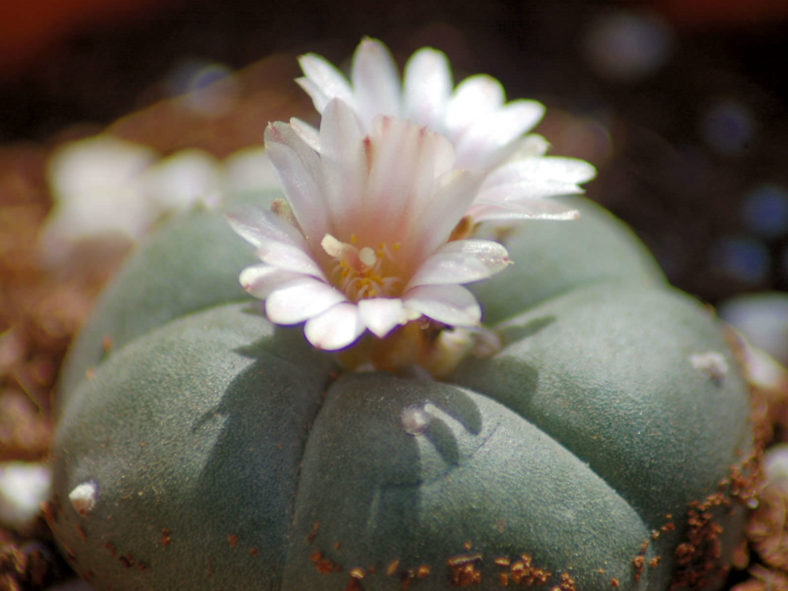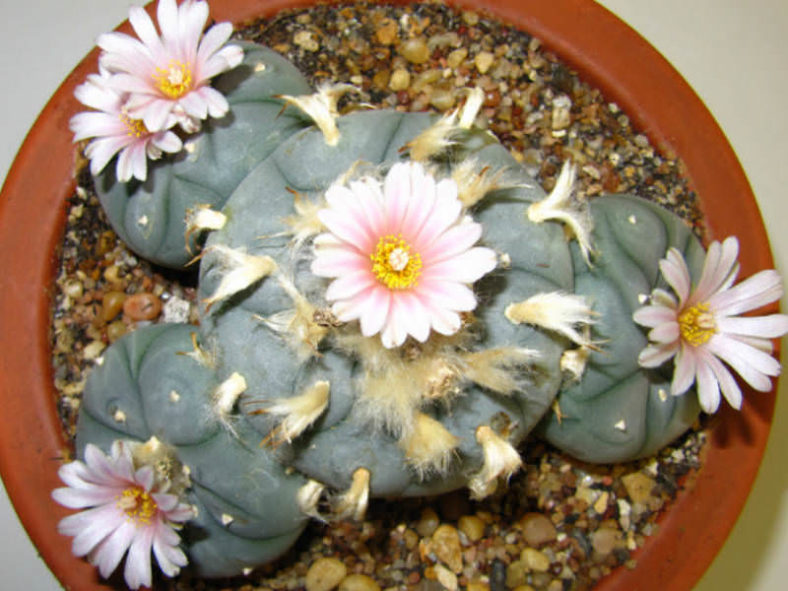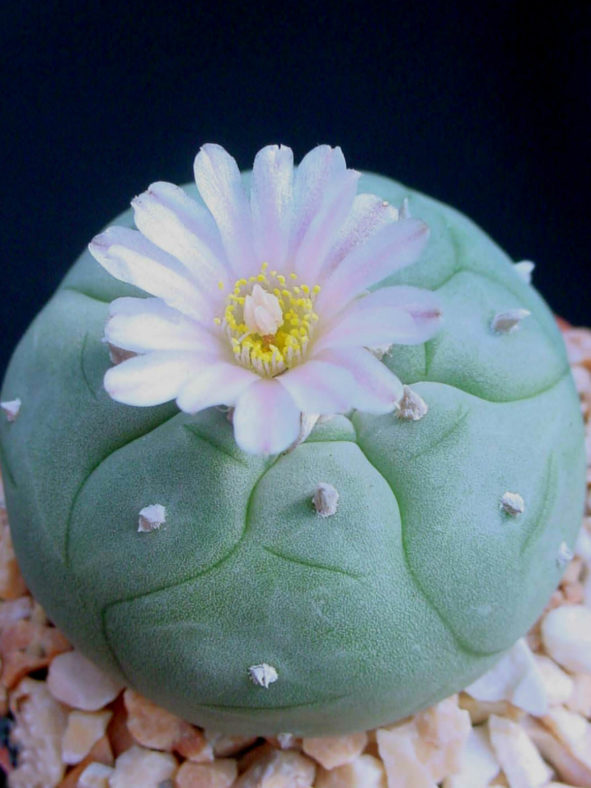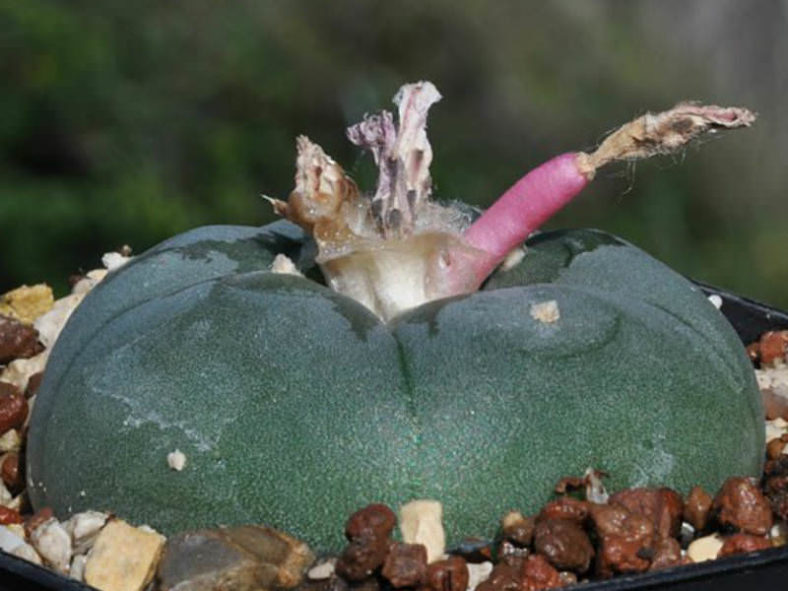Scientific Name
Lophophora williamsii (Lem.) J.M.Coult.
Common Name(s)
Cactus Pudding, Devil's Root, Diabolic Root, Divine Cactus, Dry Whiskey, Dumpling Cactus, Indian Dope, Mescal Button, Mescal Buttons, Peyote, Turnip Cactus, Whiskey Cactus, White Mule
Synonym(s)
Anhalonium williamsii, Ariocarpus williamsii, Echinocactus williamsii, Mammillaria williamsii
Scientific Classification
Family: Cactaceae
Subfamily: Cactoideae
Tribe: Cacteae
Genus: Lophophora
Etymology
The specific epithet "williamsii" (pronounced "wil-YUMS-ee-eye") honors a person named Williams, though it remains unclear which Williams the author was referencing. It is most likely Theodore Williams (1785-1875), who served as the vicar of Hendon in Middlesex for 63 years and maintained a large garden with a notable collection of cacti.
Origin
Lophophora williamsii is native to southwestern Texas and Mexico.
Description
Lophophora williamsii is a slow-growing cactus with spineless, flattened, spherical stems with a tuft of yellowish or whitish, woolly hairs that arise from the areoles. It usually grows solitary but sometimes forms dense clumps of numerous stems. The stems are blue-green, yellow-green, or sometimes reddish-green. They can grow up to 3 inches (7.5 cm) tall and 5 inches (12.5 cm) in diameter.
The flowers are pink or white to slightly yellowish, sometimes reddish, and can reach a length of 1 inch (2.5 cm) and a diameter of 0.9 inches (2.2 cm). They appear in summer and are open during the day.

Hardiness
USDA hardiness zones 10a to 11b: from 30°F (-1.1°C) to 50°F (10°C).
How to Grow and Care
Lophophoras are more tolerant of soil types than their relatives and typically grow in areas with decomposed limestone present in the soil. However, in cultivation, they do best in fast-draining, mineral-based soil, about 2/3 sand.
Abundant water is beneficial in the summer when temperatures are over 90°F (32°C) and plants are exposed to full sunlight for maximum growth. Still, they must be allowed to dry out completely between waterings.
Lophophoras should also be fertilized twice a year. Over-fertilizing will typically result in the Lophophora developing cracks and splitting.
At times, some Lophophoras develop corky material on the plant body if exposed to pesticides or insecticidal soap. This corky condition usually heals very similarly to human skin if the plants are exposed to full sunlight.
Lophophoras are free-flowering in cultivation, and although they can withstand low temperatures during winter, they do not require a cold shock to initiate flowering.
Learn more at How to Grow and Care for Lophophora.
Links
- Back to genus Lophophora
- Succupedia: Browse succulents by Scientific Name, Common Name, Genus, Family, USDA Hardiness Zone, Origin, or cacti by Genus
Photo Gallery
Click on a photo to see a larger version.


